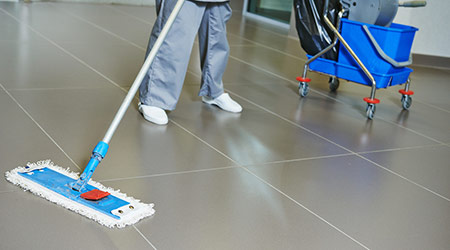Disinfectants containing quaternary ammonium chloride (also known as quats) are a popular choice in hospital environmental service departments because they are both effective and inexpensive.
However, quats are also subject to a phenomenon known as quat binding that can render them ineffective, according to an article on the CleanLink website.
“Quat binding occurs when quaternary ammonium compounds make contact with materials, such as cotton, that inactivate or impair the germ-killing performance,” said Allen Rathey, principal, Healthy Facilities Institute University, Boise, Idaho.
“What happens is, EVS staff is putting U.S. Environmental Protection Agency (EPA)-registered pesticide products and active ingredients into the environment, and it’s not killing as it’s supposed to because of the concentration decrease,” said Heidi Wilcox, microbiologist and president of Wilcox EVS, Haverhill, Massachusetts.. “So quat binding can pollute your indoor air and surfaces while not killing what you set out to kill. It’s a recipe for disaster.”

 AI Usage for Healthcare Facilities
AI Usage for Healthcare Facilities Ground Broken on Pelican Valley Senior Living Modernization Project
Ground Broken on Pelican Valley Senior Living Modernization Project All-Electric UCI Health – Irvine Hospital Set to Open
All-Electric UCI Health – Irvine Hospital Set to Open The Rising Strategic Value of Owner's Reps in Healthcare
The Rising Strategic Value of Owner's Reps in Healthcare Lawrence Group Designs Pair of Ignite Medical Resorts in Missouri
Lawrence Group Designs Pair of Ignite Medical Resorts in Missouri